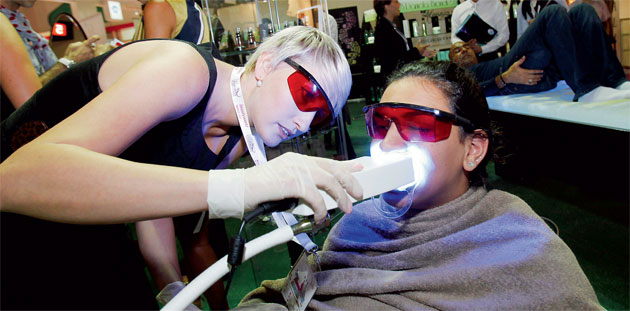
Health is our main resource, yet usually we only start thinking about it once it is depleted. In theory it should be renewable, yet for example for those estimated 40 million Americans lacking medical insurance it is unfortunately not. Similarly, Britain’s NHS is also infamous for its astronomical expenses, long waiting lists and poor quality. For all those Westerners, the rising Central and Eastern European (CEE) medical tourism branch is offering a more than viable option. While the most popular medical tourism destinations are still mostly Third World countries such as Mexico or Thailand, CEE – and especially Bulgaria – are offering a similarly affordable service, yet unde the rigorous quality assurances of the European Union regulations.
This article is aiming to help those foreigners who need affordable and quality medical solutions for themselves or their family members right away, without having to wait long months in pain and having to pay a fortune for their access to health care – one of our basic human rights. If you need fast, reliable and financially viable medical help, you should cosider putting aside your precautions and hopping on a plane to Europe, because the prices –value ratio of health care on the Old Continent are hard to beat.
Dental implants, for instance, cost an average of 4,000 USD in the U.S. and an equivalent of USD 4,200 USD in the U.K. The same procedure would cost approximately USD 780 USD in Poland or Hungary, and even less in the Czech Republic. Similarly, a hip replacement for which in the U.S. you would have to pay USD 50,000, would be only an USD 11,500 burden on your wallet in Poland.
Treatment right away and for less
Among those Americans who have to have their hip replacement, surgery, dental implants right away because they’re in that kind of pain that they can not wait, medical tourism abroad is becoming a more and more viable option. An estimated 1.6 million U.S. residents traveled abroad in 2012 for medical care, according to Deloitte. And that number looks set to increase, especially due to some of the shortcomings of Obamacare. While some Americans are cutting back their health spending, others seem to simply spend their money on their health elsewhere. A 2009 Grail Research LLC report says that Americans paid an estimated USD 35 billion on procedures abroad, a majority in Asia and Latin America. The most popular destinations are still Mexico, Thailand, Brazil and Costa Rica, as well as India, Turkey and South Korea. Yet worried about traveling to a less-developed country with less certain health and safety regulations and hygene, an increasing number of Americans – and their employers — are finding affordable treatments and procedures in nearer places – such as Poland, Turkey, Hungary, Germany and Bulgaria, just to name a few. In those places quality is on par or even better than the services offered in the United States, but without the wait and at a fraction of the expense.
The logic is understandable: a knee replacement which in Bulgaria is about USD 8,700, including implants, costs circa 23,500 in Ireland and nearly USD 35,000 in the USA. So why not go abroad for a treatment, combining medicine and vacation and still have money left for a new TV set?
While Western European countries tend to be more expensive, the new European Union member countries are still lagging behind them in terms of prices – but not quality. As a result of the low salaries, many highly trained doctors from these poorer newcomers to the EU are actually pushed into taking jobs in the West, even in the USA – yet those who stay in their homes and treat medical tourists try to make sure to do everything possible to make their clients happy and most importantly, to earn their chance of not having to leave their homes just to make ends meet.
Why CEE?
CEE seems to be the real deal: still Europe, simply for less and enjoying well-equipped private medical facilities supported by generous E.U. funding. While the most popular destinations for Americans and Canadians for medical tourism are still Mexico, Costa Rica and Brazil, because of the proximity, prices in these countries go up due to high demand. On the other hand, Central Europe is affordable enough, closer than Asia, and the culture is similar enough not to cause a cultural shock. Increasingly the region is also a chosen destination for more serious procedures, like heart and orthopedic surgeries, including heart transplants and prostate cancer treatment.
Why Bulgaria?
Take Bulgaria for example, which may have too many hospital beds according to the EU standards (as many as 6 per 1,000 people), but this is exactly what the foreigners need in order to skip the months-long waiting lists for physiotherapy in their own country. Just in comparison, the same ratio is as low as 3.3 per 1,000 in the US, so perhaps it is time to rethink your generalizations about the “uncivilized” Eastern and Central Europe.
Medical staff in Bulgaria is concentrated in big cities and resorts, and for foreign visitors this is real luxury because they can get medical massages and minor treatments even in their own hotel room while on holiday and what’s even better: for just some change in comparison to their own salaries back at home. A one-week “Health Package” at Narechen Baths during non-peak season, costs as little as USD 300 and includes, not only food and accommodation, but also a medical examination, free pool, baths with radon water, and two physiotherapies a day. Even five-star complexes in the top-destinations of Sandanski, Hissar and Velingrad rarely charge more than the equivalent of USD 620 for a one week all inclusive holiday. The most expensive diabetes and kidney- urologic diseases prophylaxis program is about BGN 2,300 or USD 1,570 for a two week full board in a luxury hotel in Bulgaria. Or if you have gastrointestinal tract problems (gastritis and colitis), Bulgarian doctors can make them disappear for as little as USD 1,160.
MEDICAL SERVICES
Laser myopia correction (both eyes)
On average for the EU: EUR 3,000
Bulgaria: EUR 700
USA average: From USD 4,000
Cataract removal (both eyes)
On average for the EU: EUR 1,500
Bulgaria: EUR 700
USA: average USD 6,500
Hip joint replacement
USA: EUR 38,000
Bulgaria: EUR 2,500
In vitro procedures (one cycle)
Turkey: EUR 2,200
Bulgaria: EUR 1,000
USA average: USD 10,500
Head neurosurgery (craniotomy)
On average for the EU: EUR 8,000
Bulgaria: EUR 1,500 euros
USA: depending on insurance from USD 50,000
Metal-ceramic dental crown
USA: EUR 2,200
Bulgaria: EUR 200
X-ray
On average for the EU: EUR 70
Bulgaria: EUR 7.50 – 15
USA average without insurance: from USD 260
Once in Europe, why not pamper yourself with some wellness and sightseeing while healing?
After you’ve taken the pain and costs of traveling overseas, why not combine your medical treatment with some wellness and sightseeing? Central and eastern European countries have long been known for natural spa and wellness resorts, which date back to the 18th century, when elites from the old world were lured to the region’s healing mineral baths.In Hungary there are approximately 1,500 thermal springs and its capital, Budapest, is among the most beautiful of its kind.
If you prefer a relaxing beach holiday or some archeological adventures in combination with your health treatment, you should pick Bulgaria – one of the oldest cultures of the world with its history of more than 5,000 years. Also, Bulgaria’s natural products such as its renowned yoghurt, rose products and herbs are world famous for their beneficial effects. in order to boost the healing process, most foreign patients are strongly advised to spend some recovery time in the clean air of the breath-taking Bulgarian mountains, which are praised by holistic experts for loading the visitors with an extraordinary amount of energy. For example, consider Bankya: only 20 kilometers from the Bulgarian capital Sofia, this little town has the second best proven air quality in Europe after that of Switzerland.
Копирано от standartnews.com
source: http://www.standartnews.com / Standart / Home> Standart News / September 11th, 2014



